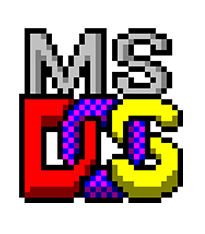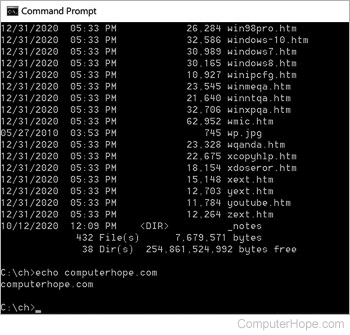MS-DOS

Short for Microsoft Disk Operating System, MS-DOS is a non-graphical command line operating system derived from 86-DOS created for IBM-compatible computers. MS-DOS was originally written by Tim Paterson and introduced by Microsoft in August 1981 and was last updated in 1994 when MS-DOS 6.22 was released. MS-DOS allows users to navigate, open, and otherwise manipulate files on their computer from a command line instead of a GUI (Graphical User Interface) like Windows.

Today, MS-DOS is no longer used; however, the command shell, commonly known as the Windows command line, is still used by many users. The bottom image is an example of a Windows command line window running in Microsoft Windows 10.
Most computer users are only familiar with navigating Microsoft Windows using the mouse. Unlike Windows, MS-DOS is navigated using MS-DOS commands. For example, to see all the files in a folder in Windows, you would double-click the folder to open it in Windows Explorer. In MS-DOS, you would navigate to the folder using the cd command and then list the files in that folder using the dir command.
How is MS-DOS pronounced?
MS-DOS is pronounced as two separate words, "MS" is pronounced as em-es and "DOS" is pronounced as dahs.
What is DOS-based?
DOS-based or MS-DOS-based are terms to describe software or hardware designed for MS-DOS or run from a Windows command line.
What was the last stand-alone version of MS-DOS?
1. MS-DOS 6.0
2. MS-DOS 6.22
3. MS-DOS 95
4. MS-DOS 6.2
86-DOS, Apple DOS, Batch file, Command line, Command prompt, Computer acronyms, DOS, DOS Mode, DR DOS, Operating system, Operating system terms, PC-DOS, PowerShell, Shell
